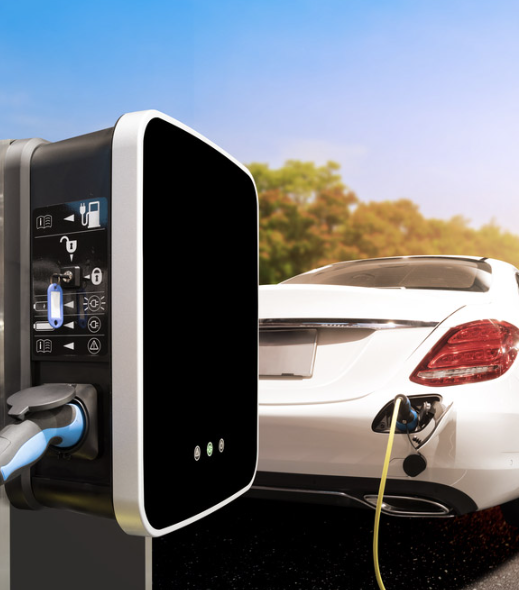
The Role of Zero-Emissions Vehicles in Building a Greener Future
Air pollution is one of the most pressing issues facing the world today, and a significant contributor to this problem is the widespread use of fossil fuels in transportation. Despite the environmental benefits of zero-emissions vehicles, they are not yet universally adopted. This article explores the role of zero-emissions vehicles, their advantages, and the challenges that hinder their widespread implementation. By the end, you’ll see how adopting these vehicles can contribute to a healthier, greener world.
What Are Zero-Emissions Vehicles?
A zero-emissions vehicle (ZEV) is a type of transportation that produces no harmful pollutants or waste byproducts during its operation. These vehicles do not emit harmful gases like carbon monoxide (CO), carbon dioxide (CO2), nitrogen oxides (NOx), hydrocarbons (HC), or fine particulate matter (PM2.5), all of which contribute to air pollution and negatively affect human health.
Countries around the world are setting ambitious targets for reducing emissions, and many have established regulations aimed at achieving net-zero emissions in the transportation sector. For example, the UK has set a target to reduce emissions by 78% by 2035. However, the level of commitment and the targets vary from country to country depending on their current energy landscape.
Benefits of Zero-Emissions Vehicles
Zero-emissions vehicles play a crucial role in improving both public health and environmental conditions. The link between air quality and human well-being is undeniable, as polluted air can lead to serious health issues. By transitioning to cleaner forms of transportation, countries can see major benefits in the following areas:
- Improved Public Health
Reducing emissions from vehicles directly leads to cleaner air. Cleaner air improves overall health by reducing the incidence of respiratory diseases such as asthma, tuberculosis, and lung cancer. Cleaner air also benefits plants and animals, supporting a healthier ecosystem. - Lower Healthcare Costs
Air pollution is a major contributor to respiratory diseases, which place a significant financial burden on healthcare systems. By reducing pollution, the prevalence of these diseases would decrease, leading to lower healthcare costs. This could free up resources for other pressing issues. - Cooling the Planet
A major advantage of zero-emissions vehicles is their reduced carbon footprint. By decreasing the amount of greenhouse gases released into the atmosphere, these vehicles help mitigate global warming. Lower emissions contribute to reducing the Earth’s temperature, potentially preventing a rise of more than 1.5°C, which could have catastrophic consequences. - Reducing the Frequency of Natural Disasters
The effects of zero-emissions vehicles extend beyond just cleaner air. Reducing carbon emissions can also help lessen the frequency and severity of extreme weather events like floods, heatwaves, and droughts, which are becoming more common due to global warming. - Lowering Energy Costs
With more zero-emissions vehicles on the road, nations could reduce their reliance on imported fossil fuels, which can be costly. By investing in domestic zero-emissions transportation, countries can reduce their energy import bills and use the savings to invest in the development of sustainable technologies.
Challenges to the Widespread Adoption of Zero-Emissions Vehicles
While the benefits of zero-emissions vehicles are clear, their widespread adoption faces several challenges:
- High Initial Costs
Electric vehicles (EVs), a prominent example of zero-emissions vehicles, still carry a high price tag, primarily due to the cost of the battery and the necessary charging infrastructure. The higher the technology used, the more expensive the vehicle becomes. - Limited Charging Infrastructure
In many countries, especially rural areas, charging stations for zero-emissions vehicles are not as widespread as gasoline stations. The installation of charging infrastructure is costly, which further slows down the adoption of these vehicles in some regions. - Supply Chain Constraints
The production of zero-emissions vehicles requires certain raw materials, such as lithium, cobalt, and nickel, which are not readily available in all countries. Disruptions in the supply chain can increase the cost of manufacturing and, subsequently, the price of the vehicles.
Real-World Examples of Zero-Emissions Vehicles
Despite these challenges, several countries are moving forward with policies that promote the use of zero-emissions vehicles. Governments offer incentives and support for both the industry and consumers, which is gradually making these vehicles more accessible. Here are some examples of zero-emissions vehicles that are already available:
- Battery Electric Cars (BEVs): These vehicles run solely on electricity stored in rechargeable batteries. They are entirely emissions-free during operation and are one of the most popular types of zero-emissions vehicles. Prices vary, with the cheapest models starting around £14,995 and the most expensive models reaching up to £140,000.
- Battery Electric Motorcycles: These bikes use lithium-ion batteries as their power source and offer an eco-friendly alternative to traditional gasoline-powered motorcycles. They are more affordable than electric cars, with prices ranging from £600 to £1,200 for basic models.
- Hybrid Electric Vehicles (HEVs): These vehicles combine a gasoline engine with an electric motor. They can run on battery power for short trips and switch to gasoline for longer journeys, offering flexibility without sacrificing emissions-free operation for local travel.
Conclusion
Zero-emissions vehicles offer numerous benefits, from improving public health and reducing healthcare costs to mitigating climate change. However, challenges such as high costs, limited charging infrastructure, and supply chain issues must be addressed to make these vehicles more accessible to the masses. Despite these hurdles, countries around the world are making strides to adopt and promote zero-emissions transportation, paving the way for a greener, healthier future.
As more people adopt these vehicles, we can expect significant improvements in air quality, reductions in energy costs, and a slowdown in global warming. The transition to zero-emissions vehicles is not only a vital step in reducing pollution but also a powerful tool in creating a sustainable future for generations to come.